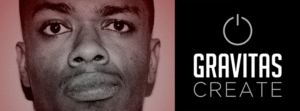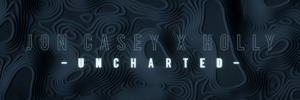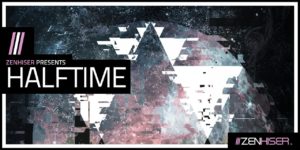CLICK HERE TO JOIN THE COMMUNITY
After releasing his first single on Gravitas Recordings through their Infusion Singles Series, Jon Casey held a Producer Q&A session for the Gravitas Create Community. Members of the community had the opportunity to pick Jon’s brain about music production tips, his process, and anything else. Jon is full of music production knowledge and left us with a lot of production nuggets that can be applied immediately to the production process. We have summarized the Q&A session here so that you can easily go back and learn from that session. We hope that you enjoy the tips and tricks. Check out his new tune below out now on Gravitas Recordings.
PRODUCER Q&A WITH JON CASEY

FACEBOOK – SOUNDCLOUD – INSTAGRAM – TWITTER
GRAVITAS CREATE: So, what exactly is halftime? I know there are some different ideas out there on what it is. Does it have to be a certain bpm? Is it just half-time drum and bass? Curious to know your take on it.
JON CASEY: Okay, so there is no ONE answer, so I’ll give you my rendition on what I think halftime is. It gets its name from being half of Drum n Bass (usually around 170 – 176 bpm) and I feel it is REALLY important for a halftime track to have a hip-hop influence, hence, that very groovy sounding flow in most halftime tracks stemming from guys like Timbaland, Swizz Beats, Scott Storch etc…
KASEY CHESNUTT: What’s a drum design/mixing tip that you feel is indispensable? Bass Design? Specifically, how do you like to distort/harmonically add to your subs?
JON CASEY: So as Slade said, corpus can give you PUNCHY ass drums, but I hardly use it in production (BUT used it A LOT in making my sample pack). To that harmonic hollow sound on basses/808’s etc’s I usually just use EQ a lot, brickwall the low ends at about 38-40Hz, I feel that adds more punch and then add gain around 100-180Hz for that “hollow” harmonic sound. Hope this answers your question. P.S. there is no right or wrong obviously, I just find this to work very well for me.

GRAVITAS CREATE: Do you have any tips or insight to how you apply swing to your drum tracks? Just by ear or something like the Ableton groove pool?
JON CASEY: YO! So, I don’t use drum racks, I use all my drums in the arrangement view (as audio), I just group them and then on ALMOST ALL my percussion, hats and sometimes add a second layer of kicks I’ll (track) delay them by about 30 – 45 milliseconds. Sometimes I’ll go to the extreme of putting the track delay at like 70-80 for that very offbeat but groovy feel. Another way of doing this is to only quantize your snares and then everything else you place by turning off your quantizing.
KASEY CHESNUTT: What’s your favorite reverb plugin? Do you have any cool/unique reverb tricks you like to use?
JON CASEY: I LOVE Max for Live’s Convolution Reverb, I normally create a chain and then parallel them. Just creating one without reverb [dry] and one with the reverb all the way up [100% wet] and then I’ll sidechain the reverb chain with itself so that when the sound comes in, the reverb will only come in after the sound so that the dry sound doesn’t get all muddied up with the reverb on top of it. After this, I’ll OTT compress the sound to add that PUNCH that a lot of people love.
MAURIZIO CHIARO: I’ve noticed you use complicated rhythms for some of your sections (i.e. on your tune “Saria”), so the question is: Do you play the groove around until it sounds good to your ears? Or do you try to execute a specific polyrhythm that you have in mind? I’d love to know your process.
JON CASEY: ALRIGHT! So… I think it depends, A LOT of the time I’ll have a groove in my head that I just need to get out “on paper” i.e. in Ableton. Other times I’ll just mess around with different grooves (maybe on my Launchpad pro, Midi keyboard or even the laptops keyboard) and see which sounds the best but A LOT of the time, it relies on my “musical intuition”. Like I’ll be like “oooh!” that sounds dope” or “that sounds terrible, let me rearrange it”. Although, sometimes when I find it difficult to create melodies, I’ll leave it up to chance, so put a type of randomizer on a bunch of chords/harmony/melody I laid out then see where that takes me.
GARRETT WILLIARD: When you start a track do you start with the beginning of the song or the “drop” and build around that? Curious how your productions usually start. Also, do you have any plugins that you find yourself using a lot that you think are very underrated?
JON CASEY: OI! So, a LOT of the time I’ll start with the drop, seeing that this is what the song “revolves around”. I’ve made songs starting with the intro but very seldom does this end up a congruent project. So I’ll catch myself making an 8 bar groove and just adding and adding until it sounds HOT to me and then take the song further from there. I make sure that the process is FUN and that I do not think about it but rather feel it the whole way through. I find this works best. With regards to plugins, my top two most underrated VST’s are CableGuys VolumeShaper 5 (and there whole shaperbox collection) & Max For Live’s Convolution Reverb.

KASEY CHESNUTT: What do you like to use to make your brassy/brahms type leads/stabs? Like in “Actin’ Up”.
JON CASEY: SO!… I’ll normally use Serum, but with a chain of effects. So, it’ll go like such; Serum (w/ all its effects) -> OTT -> EQ -> Saturation -> Serum FX (again) because I love its distortion and hyper dimension effect as a last resort. Hope this answers your question
ALEX GONZALEZ: Jon, do you ever find yourself in a situation where you just aren’t feeling the things that you are writing? How do you work through these situations?A follow-up, what musicians are inspiring you the most right now?
JON CASEY: Yes. 100%. That happened to me a few weeks ago and got worried but realized it’s actually quite typical in any producer’s journey. It’s in this that one finds out a lot about themselves musically. I read the book ‘The War of Art’ by Stephen Pressfield and it gave me a lot of insight about this type of resistance and that every artist faces it. Check it out if you want. Artists inspiring me at the moment: Ivy Lab, Araabmuzik, X&G, GoldLink (always), the homie aedfx, Chee and myself of course.
BENJI HANNUS: how do you go about making the lead synth in today’s Jamurai? Reminds me a lot of Chee – Genesism and just sounds super fresh
JON CASEY: So, I’ll either use Serum or Razor (Native Instruments) and then a chain off effects (essential). OTT, Saturation, Convolution etc… Mostly just sit and turn nobs until it sounds dope enough to take it to the next level.
GRAVITAS CREATE: Hey man, what tools do you use to achieve tonal balance in your mix/masters? EQ and saturation? Also, how do you prevent phase smearing when working with stereo sounds?
JON CASEY: So, when mixing and mastering, I’ll make sure to put a mid/side VST like Voxengo MSED and then mute the mids and listen to all the frequencies that come through and see if they’re a bit harsh and do the same by muting the sides and leveling the mids. It just ends up me sitting there and hearing what sounds off and correcting it, whether it’s a phase issue or something else. Check Doctrines Neurofunk masterclass, very insightful.

CHASE CHARK CLARK: Any tips for distorting audio? I use Ableton’s saturator on waveshaper setting, lots of overdrive and amp, but often overdo it and just create a muddled mess. I really like the way you’re able to use distorted audio in a sort of ‘clean’ way so just some general EQ tips or ordering of fx or something would be super helpful! Thanks for doing this, definitely going to read the whole thread. Also, what effects are you using on drums to give them a bit more character?
JON CASEY: On my kicks and snares I’ll ALWAYS use a glue compressor for more of a punch on them, and then EQ them the way I feel is best suited for the kick itself and the song around it. I layer my kicks with a light hat and granulize the SH** out of the hat so that it sounds “crushed’ in a sense to add that high end for the kick (not too loud) and then I sidechain using waveshaper to give space for the drums to do their magic. Grain Delay on my percussion is always a must, messing with the frequency and spray simultaneously … p.s. I would say (the Ableton police might arrest me for this but anyway), redlining isn’t such an issue if you’re soft clipping the drums, but just keep your ears out for anything out of the ordinary…
CHASE CHARK CLARK: Can you go a little more in-depth on what you mean by sidechain using waveshaper?
JON CASEY: So, there’s a plug-in called VolumeShaper by CableGuys. It’s an amazing tool (I usually just throw it on my group “body” which is mostly just the main leads and sometimes Percussion and other miscellaneous sounds) and sidechain using that. Google them (and some tutorials on it, as well as ShaperBox [which includes other nifty gizmos for production] from them).
GRAVITAS CREATE: What made you switch from FL Studio to Ableton? Also, do you ever perform out of Ableton for shows?
JON CASEY: Lesego (Chee) and I both said, “hey we feel like we need a change” and Ableton seemed like the way. We switched up and never looked up. When I first started out playing shows I used Ableton and my LaunchPad Pro, but realized I need to get on CDJs ASAP.
GRAVITAS CREATE: Can we expect any future It Hz music releases?
JON CASEY: We MIIIIIGHT be working on an EP.
[Check out the It Hz project below between Jon Casey & Chee]
GRAVITAS CREATE: How long have you been producing for? Did you have a musical background with learning an instrument or anything? What got you inspired to get into music production?
JON CASEY: Soooo! Since grade 8. 8 years total, but professionally about 2 years. I took piano in grade 4 and drums for a few months, but nothing too serious. Just messed around with FL Studio and I’ve gotten hooked since.
AIDLIER MEYER: So, when producing how is your workflow like? For example, do you dedicate one day solely to sound design, drums, etc… Or do you open up Ableton and work on everything all together as your writing? Touching base on distortion a bit, do you like to distort your 808’s and if so how do you like to go about it? Also back to what Garret asked in regards to the scene where you live, I noticed you mentioned your hometown, Johannesburg and Braamfontein, can u tell me a bit of how the the music scene is in Cape Town ?
JON CASEY: I think I’ll work on a song first with drums on most occasions … then from there the melody (using sounds that I’ve made on days that I dedicate to sound design). But mostly I’ll work on a song all together as I go along. Usually like “drop”, “intro” and then break etc… My 808s usually come from a simple sine wave that I would distort through saturator, PSPvintage warmer and EQ but the BEST 808’s come from Outputs Substance VST. That sh** is BOMB AF for bass man. Cape Town is popping as well (more around the best time of year which is around October to February [summer time]) w/ places like Fiction and Waiting Room (depending on the event) and then events like Rocking the Daisies or Cape Town Electronic Music Festival (CTEMF) is a big one as well. Brilliant platform for SA Electronic artists and for international artists to experience the SA music scene

JASON COTE: Would love to hear about your interaction with sampling also, field recordings, using sounds from sample packs, random percussion sounds, as well as isolating acapellas.
JON CASEY: I do try to use my own foley, but the only foley I have is through recording through my iPhone, but it’s not an issue sample packs wise, it’s weird. With some projects, I’ll literally synthesize all my own sounds and make all my own soundscapes etc… And sometimes I’ll literally JUST use samples but most of the time it’s a healthy combo of the two.
Interested in making halftime beats? Check out Jon Casey’s sample pack on Zenhiser Audio called “Halftime“. It features over 554 samples, and 74 midi files. All loops are in the range of 75-90 bpm and all samples are mastered at 24-bit. Check out the demo song below.

thanks for the information